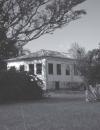Abstract
Rio Grande do Sul, located in the south of Brazil, has developed an important cattle farming activity. Large farms, called "estancias" or "haciendas", were initially founded in the north of the state, because of the good quality of the pastures and the livestock named xucro which came for the Jesustic remnants. This regional economical activity developed a particular rural architecture different from the Portuguese - Brazilian approaches that were common until to the middle of 19th century, moment in which eclectic and platenses (from la Plata, Argentina) influences appeared; the first from the industrial period that it was starting, the second from the Brazilian borders. During two centuries, the rural architecture related to cattle farming in Rio Grande do Sul was a heterogeneous display of construction, expressive, and interior space aspects.Apuntes is registered under a Creative Commons Attribution 4.0 International Public License. Thus, this work may be reproduced, distributed, and publicly shared in digital format, as long as the names of the authors and Pontificia Universidad Javeriana are acknowledged. Others are allowed to quote, adapt, transform, auto-archive, republish, and create based on this material, for any purpose (even commercial ones), provided the authorship is duly acknowledged, a link to the original work is provided, and it is specified if changes have been made. Pontificia Universidad Javeriana does not hold the rights of published works and the authors are solely responsible for the contents of their works; they keep the moral, intellectual, privacy, and publicity rights.
Approving the intervention of the work (review, copy-editing, translation, layout) and the following outreach, are granted through an use license and not through an assignment of rights. This means the journal and Pontificia Universidad Javeriana cannot be held responsible for any ethical malpractice by the authors. As a consequence of the protection granted by the use license, the journal is not required to publish recantations or modify information already published, unless the errata stems from the editorial management process. Publishing contents in this journal does not generate royalties for contributors.


